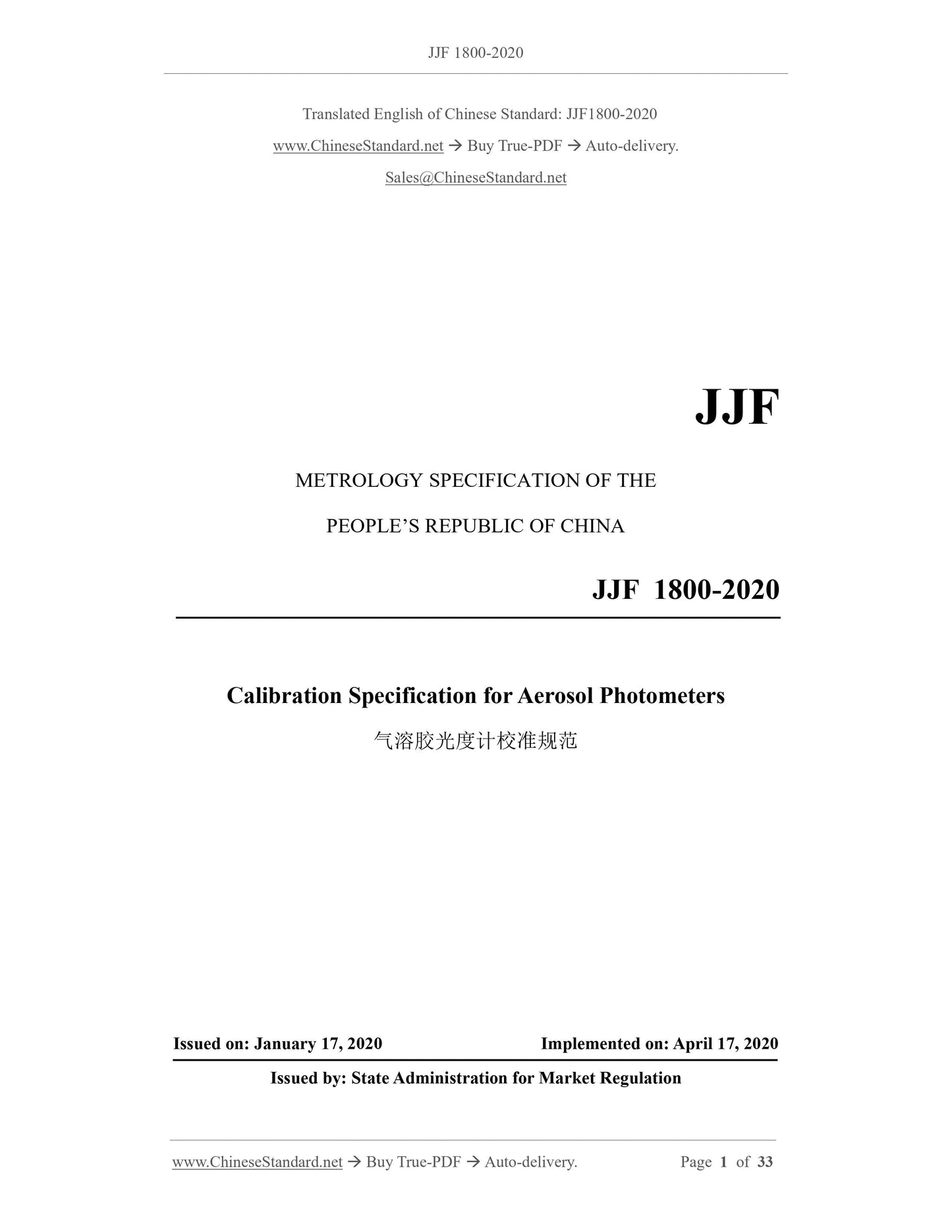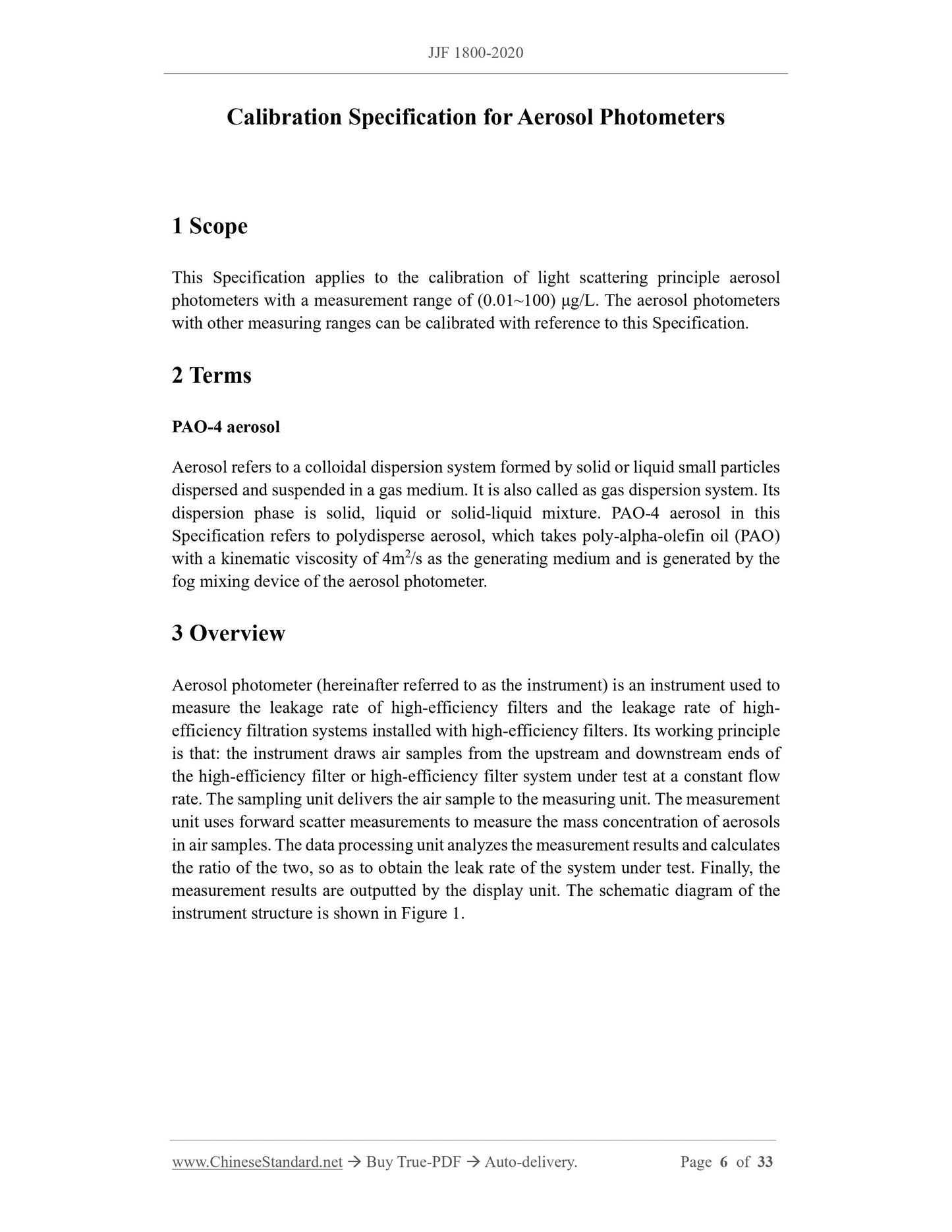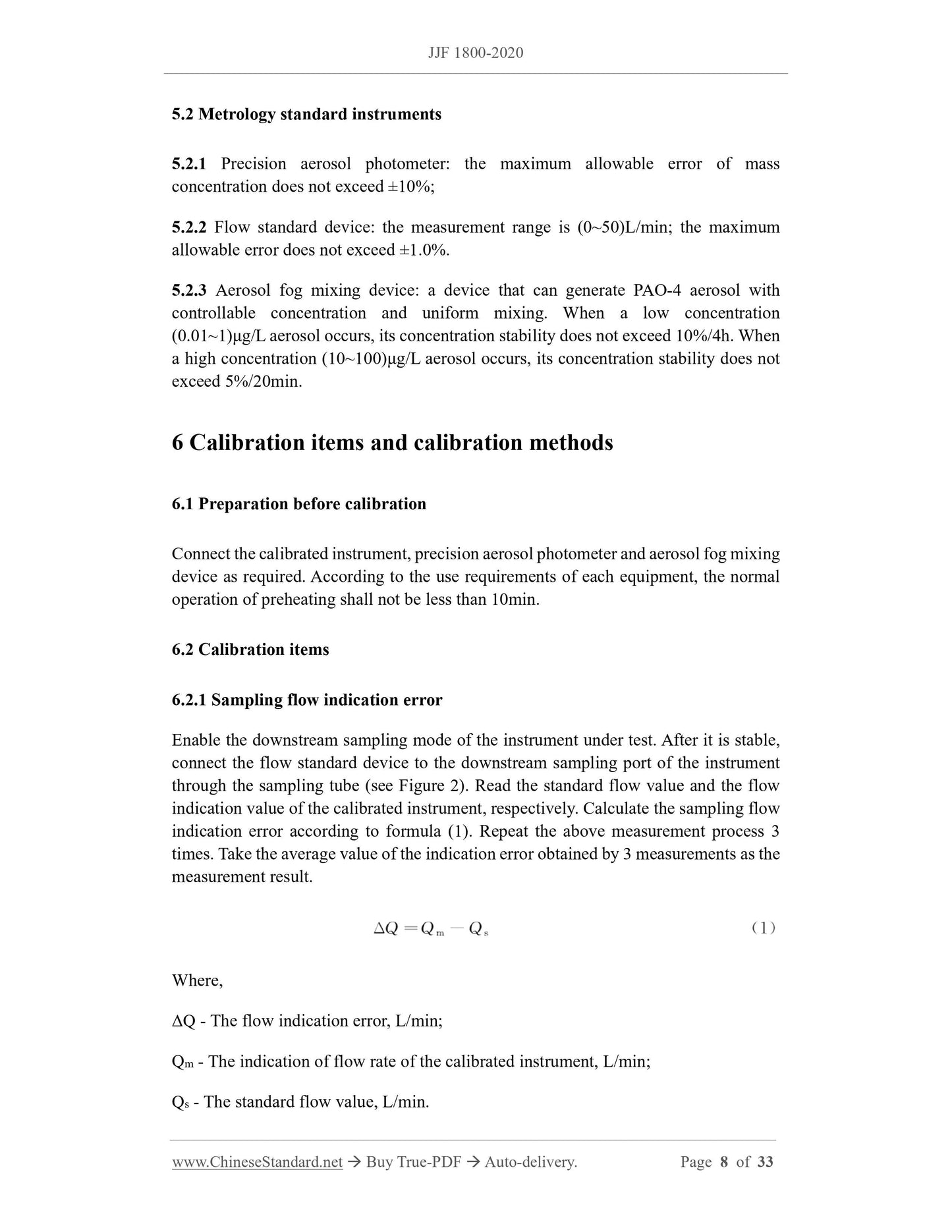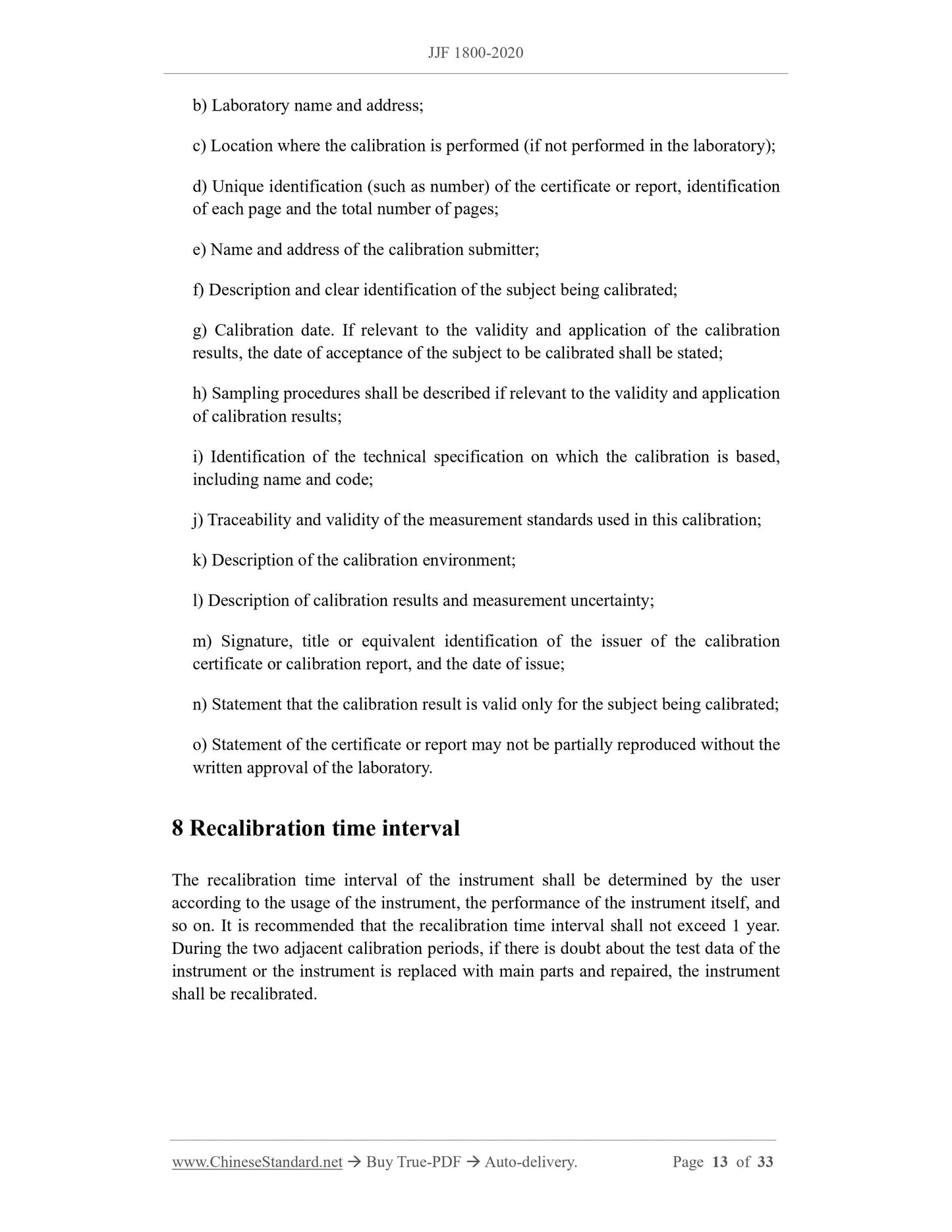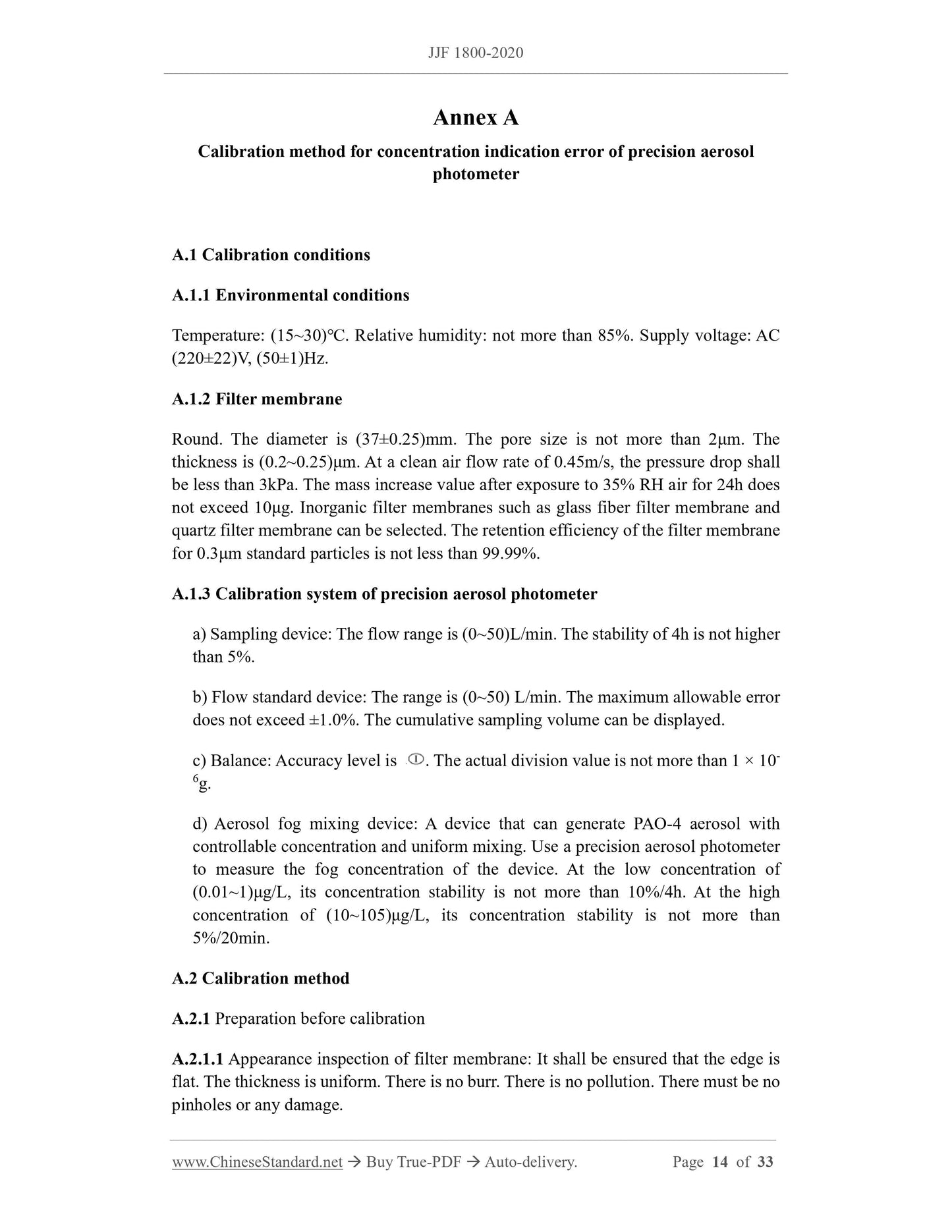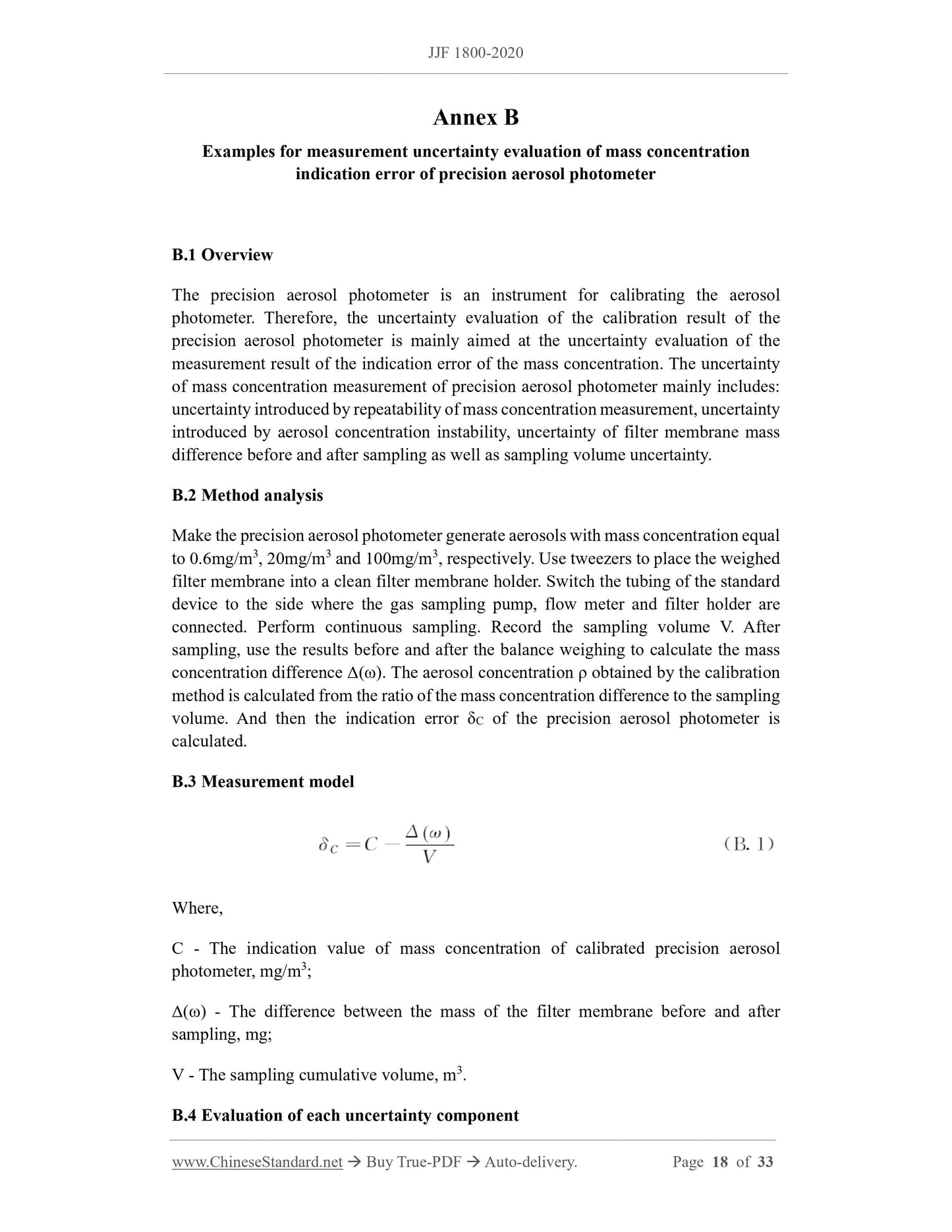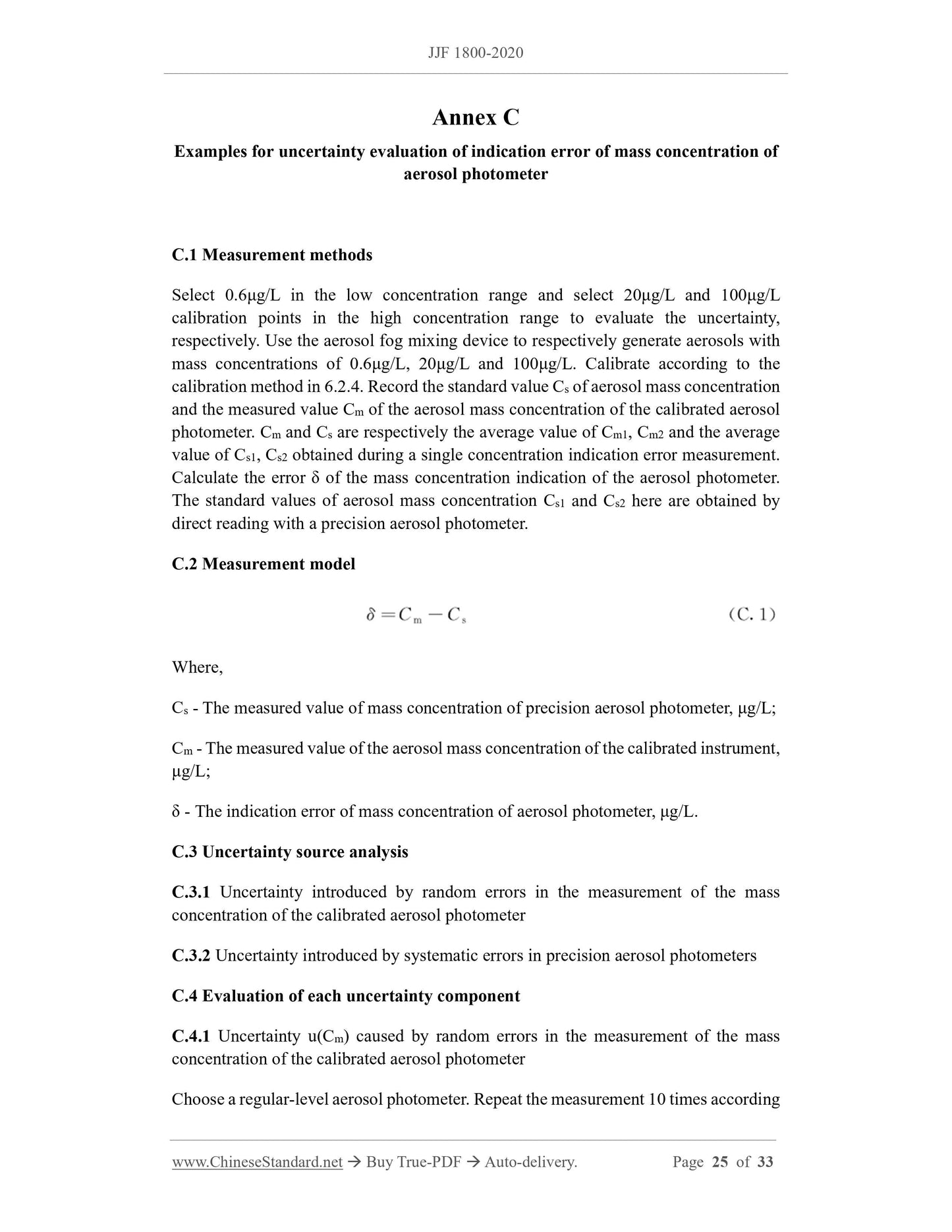1
/
of
7
www.ChineseStandard.us -- Field Test Asia Pte. Ltd.
JJF 1800-2020 English PDF
JJF 1800-2020 English PDF
Regular price
$410.00
Regular price
Sale price
$410.00
Unit price
/
per
Shipping calculated at checkout.
Couldn't load pickup availability
JJF 1800-2020: Calibration specification of aerosol photometers
Delivery: 9 seconds. Download (and Email) true-PDF + Invoice.Get Quotation: Click JJF 1800-2020 (Self-service in 1-minute)
Newer / historical versions: JJF 1800-2020
Preview True-PDF
Scope
This Specification applies to the calibration of light scattering principle aerosolphotometers with a measurement range of (0.01~100) μg/L. The aerosol photometers
with other measuring ranges can be calibrated with reference to this Specification.
Basic Data
| Standard ID | JJF 1800-2020 (JJF1800-2020) |
| Description (Translated English) | Calibration specification of aerosol photometers |
| Sector / Industry | Metrology and Measurement Industry Standard |
| Classification of Chinese Standard | A50 |
| Classification of International Standard | 17.020 |
| Word Count Estimation | 26,282 |
| Date of Issue | 2020 |
| Date of Implementation | 2020-04-17 |
| Issuing agency(ies) | State Administration for Market Regulation |
Share
